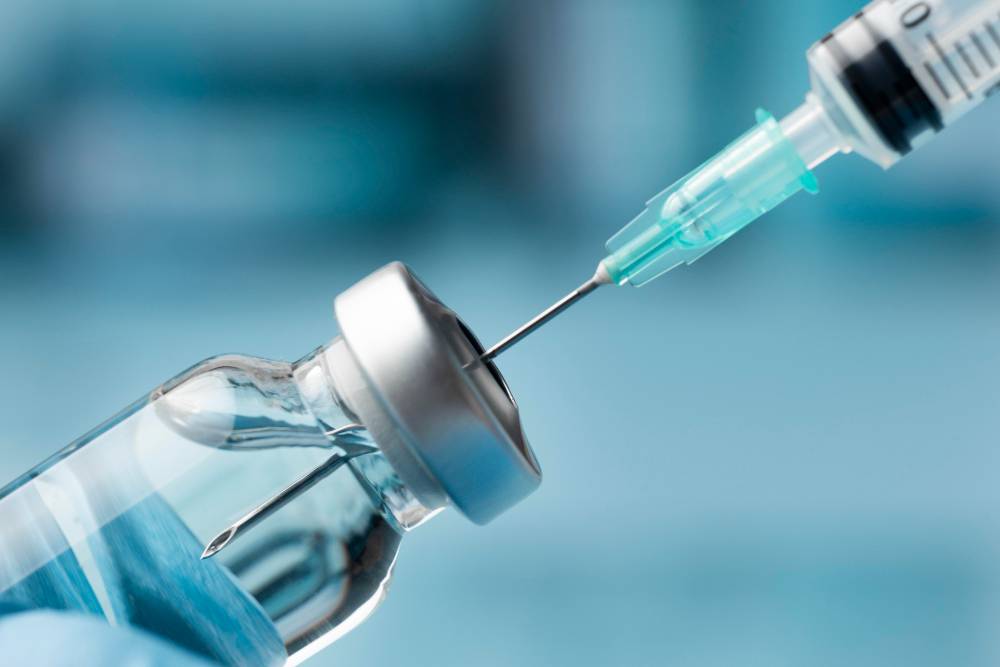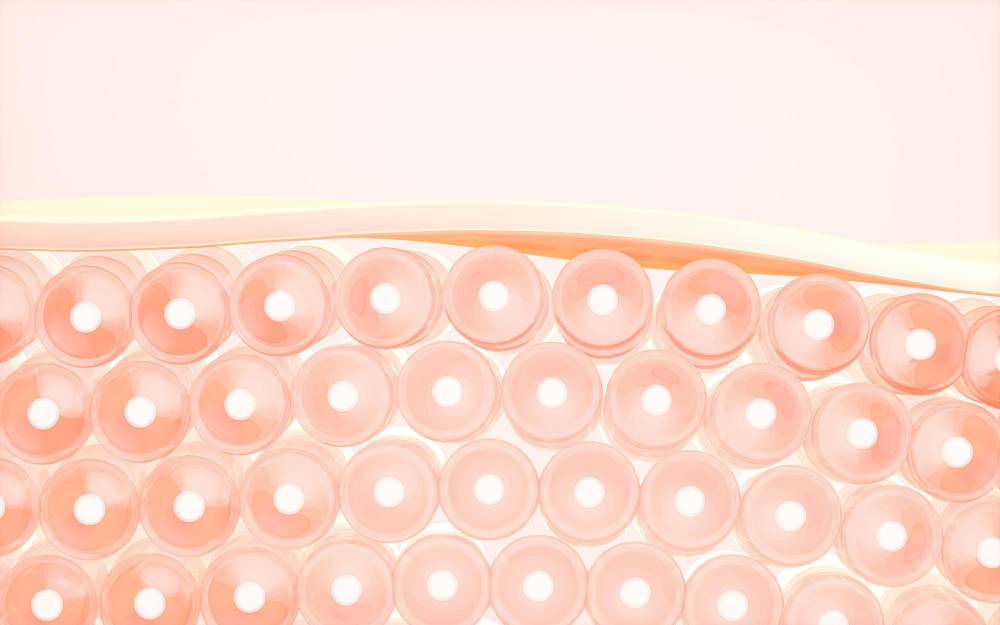As a crucial means of disease prevention, vaccines stimulate the immune system to produce antibodies and memory cells. These memory cells can provide a continuous response, preventing future infections, reducing the risk of severe illness, and enhancing overall immunity. Therefore, the medical community has never ceased its innovative research on vaccine technology, which constantly brings new hopes for human health.
Recently, Nature has successively published groundbreaking vaccine research results, attracting widespread attention. On the one hand, personalized cancer vaccines have successfully triggered a strong immune response in advanced kidney cancer patients, bringing new therapeutic prospects for cancer patients at high risk of recurrence. On the other hand, Staphylococcus epidermidis, a bacterium that lives on human skin, has been ingeniously utilized by scientists, holding the promise of promoting the development of needle - free vaccines and revolutionizing traditional vaccination methods.
Personalized Cancer Vaccines: New Hope for Advanced Kidney Cancer Patients

"Surgical resection of tumors" is a standard treatment for kidney cancer. However, the risk of cancer recurrence after surgery remains high. Unfortunately, the medical community has yet to find an effective way to reduce the postoperative recurrence rate and significantly extend patients' survival periods.
Now, a new study published in Nature magazine shows that a personalized anti - cancer vaccine has successfully triggered a strong immune response in 9 stage III and IV kidney cancer patients, bringing new therapeutic hopes for high - recurrence - risk patients. This vaccine is designed to train the human immune system to recognize and eliminate cancer cells. It is usually administered after surgery to help clear residual tumor cells. As of the end of data collection, none of the 9 patients experienced cancer recurrence within an average of 40 months after surgery, demonstrating significant early - stage efficacy.
This phase I clinical trial was relatively small - scale, with 9 patients suffering from clear - cell renal cell carcinoma (ccRCC). Clear - cell renal cell carcinoma is the most common type of kidney cancer. For stage III and IV patients, the standard treatment is usually surgical resection of the tumor, followed by adjuvant pembrolizumab, an immune checkpoint inhibitor, to activate the immune system and reduce the risk of recurrence. However, approximately two - thirds of patients still experience cancer recurrence, especially for advanced stage III or IV patients, the recurrence risk is high, leaving very limited treatment options.
In this study, 2 out of 9 patients had metastatic disease, and 7 patients had advanced, high - grade disease. The researchers extracted specific small mutant protein fragments from the kidney tumor tissues of each patient. These characteristic molecules are called neoantigens. Neoantigens are unique molecular markers of cancer, highly specific, and not present in normal cells. They are important targets for T - cell - mediated anti - tumor immunity. In addition, the researchers used prediction algorithms to screen out the neoantigens most likely to trigger an immune response and prepared vaccines based on them. Therefore, these vaccines are customized according to the tumor characteristics of each patient, using the tumor's genetic material to train the immune system to recognize and eliminate cancer cells.
During the experiment, all 9 patients received personalized cancer vaccine treatment after surgery, and 5 of them also received the immunotherapy drug ipilimumab in combination. They first received a series of initial - dose injections, followed by two booster doses. After a series of injections, no severe adverse reactions were observed in the patients. The researchers said that this vaccine can guide the immune system to precisely attack cancer cells by targeting neoantigens, thereby improving the efficacy and reducing the immunotoxicity to normal cells.
A series of analyses showed that the vaccine successfully induced an immune response within three weeks. The number of vaccine - specific T cells increased by an average of 166 times, and these protective T cells remained at a high level in the body for up to three years. In addition, laboratory studies showed that the T cells induced by the vaccine were significantly active against the patients' own tumor cells.
These research results are exciting. Eight years ago, when the research team launched this study, it was uncertain whether this method would be applicable to kidney cancer. Previously, similar methods had shown potential in melanoma, partly because melanoma has a higher mutation burden and can produce more neoantigens. However, kidney cancer has a lower mutation burden, and there are relatively fewer neoantigens available for the vaccine to target.
Now, the new research results show that vaccine - related new T - cell clones expand rapidly in a short period and exhibit a strong and persistent immune response. This discovery indicates that even in tumors with a low mutation burden, personalized neoantigen vaccines can still successfully induce a strong immune response.
The researchers pointed out that although these results still need to be further verified in larger - scale studies, they believe that these early data have brought great hope, indicating that anti - tumor vaccines are expected to become a viable treatment option for kidney cancer patients at high risk of recurrence.
Staphylococcus epidermidis May Promote the Development of Needle - Free Vaccines

For microorganisms, healthy human skin is not an ideal living environment. The skin is too dry and "salty" for most single - celled organisms, and there is not much for them to "absorb".
However, there are still some tenacious microorganisms that can adapt to this environment and make the skin their home. One of them is Staphylococcus epidermidis. These usually harmless bacteria are present in almost every hair follicle of everyone. In recent years, scientists have gradually realized that the immune system's response to Staphylococcus epidermidis is much stronger than expected.
Recently, in two studies published in Nature, researchers "domesticated" this bacterium. They found that the skin is not only a passive barrier but can also produce its own antibodies to resist infections. This discovery has opened up the possibility of developing needle - free vaccines for use on the skin.
In the initial experiment, the researchers dipped a cotton swab into a vial containing Staphylococcus epidermidis and then gently wiped the head of an ordinary mouse. The mouse did not undergo any hair - shaving, rinsing, or fur - cleaning steps. Then, they put the mouse back into the cage and took blood samples from it at fixed time points within the next six weeks to check whether the mouse's immune system had produced any antibodies that could bind to Staphylococcus epidermidis.
The experimental results were "astonishing". The concentration of these antibodies increased slowly at first, then continued to rise, and reached a level higher than that of mice vaccinated with a regular vaccine after six weeks. After that, this concentration remained at such a high level. This means that the mice were as if vaccinated, and their antibody responses were as strong and specific as those against pathogens.
The researchers found that this phenomenon also seems to occur naturally in humans. By testing blood samples obtained from blood donors, they found that the circulating levels of antibodies against Staphylococcus epidermidis in humans were as high as those produced after vaccination. Moreover, the antibody response against Staphylococcus epidermidis can "preemptively strike" before problems occur, enabling the immune system to respond quickly when necessary, such as when the skin is damaged.So, is it possible to redirect the immune response triggered by Staphylococcus epidermidis against pathogens and develop a new type of vaccine?
In the second study, the researchers learned that the part of Staphylococcus epidermidis that can most strongly trigger an immune response is a protein called Aap. This huge dendritic structure protrudes from the bacterial cell wall and is five times the size of an ordinary protein.
The researchers believe that Aap may expose some of its outermost parts to the sentinel cells of the immune response. These cells regularly crawl across the skin, sample the hair follicles, grab some fragments from the "branches and leaves" of Aap, and then take them back inside to show other immune cells responsible for producing an appropriate antibody response to the substance. Aap not only causes a surge in blood - borne antibodies (IgG) but also causes a surge in other antibodies called IgA, which are located in the mucosal layers of our nostrils and lungs. The researchers observed a surge in IgA in the nostrils of mice.
After identifying Aap as the main target of antibodies, the researchers found a way to make it work. They replaced the gene segment encoding the part that is usually displayed in the "branches and leaves" of Aap with a gene segment encoding a fragment of the tetanus toxin - a harmless part of a highly toxic bacterial protein. So, would the mouse's immune system "see" this fragment and produce a specific antibody response to it?
The researchers repeated the "dipping" and "wiping" cotton - swab experiment. This time, they used either ordinary Staphylococcus epidermidis or bioengineered Staphylococcus epidermidis encoding the tetanus toxin fragment.
Within six weeks, they observed that mice wiped with the modified Staphylococcus epidermidis produced extremely high levels of antibodies against the tetanus toxin. When the researchers injected a lethal dose of tetanus toxin into the mice, all the mice wiped with ordinary Staphylococcus epidermidis died, while the mice wiped with the modified Staphylococcus epidermidis showed no symptoms.
In a similar experiment, the researchers inserted the gene of the diphtheria toxin into Aap and also induced a large number of antibodies against the diphtheria toxin.
These findings show that Staphylococcus epidermidis can trigger an antibody response similar to that of traditional vaccines. That is, the researchers have gradually turned Staphylococcus epidermidis into a "plug - and - play", locally applicable live vaccine.
Next, the researchers plan to verify its effectiveness in monkeys. If all goes well, they expect this vaccination method to enter clinical trials within two to three years.
Most vaccines contain components that stimulate an inflammatory response, making vaccinated people feel uncomfortable. But Staphylococcus epidermidis does not cause these reactions. Therefore, once the trial is successful, it will mean that we will have a needle - free vaccine - it is completely painless, does not cause fever, swelling, redness, or arm soreness, and there is no need to wait in long lines for vaccination.
Reference Sources:https://hms.harvard.edu/news/kidney-cancer-vaccine-shows-promise-early-trial https://www.dana-farber.org/newsroom/news-releases/2025/cancer-vaccine-shows-promise-for-patients-with-stage-iii-and-iv-kidney-cancer https://www.nature.com/articles/d41586-025-00308-8 https://www.nature.com/articles/s41586-024-08507-5 https://med.stanford.edu/news/all-news/2024/12/skin-bacteria-vaccine.html https://www.nature.com/articles/d41586-024-04068-9#ref-CR1




Post comments